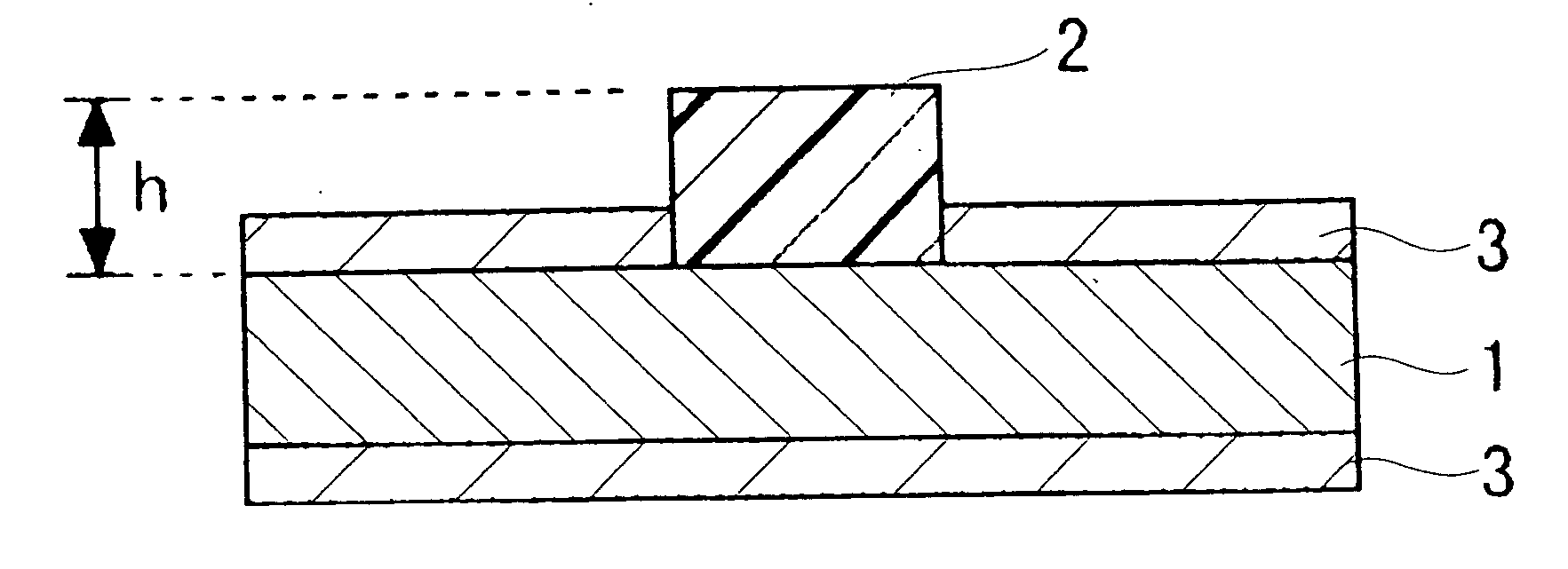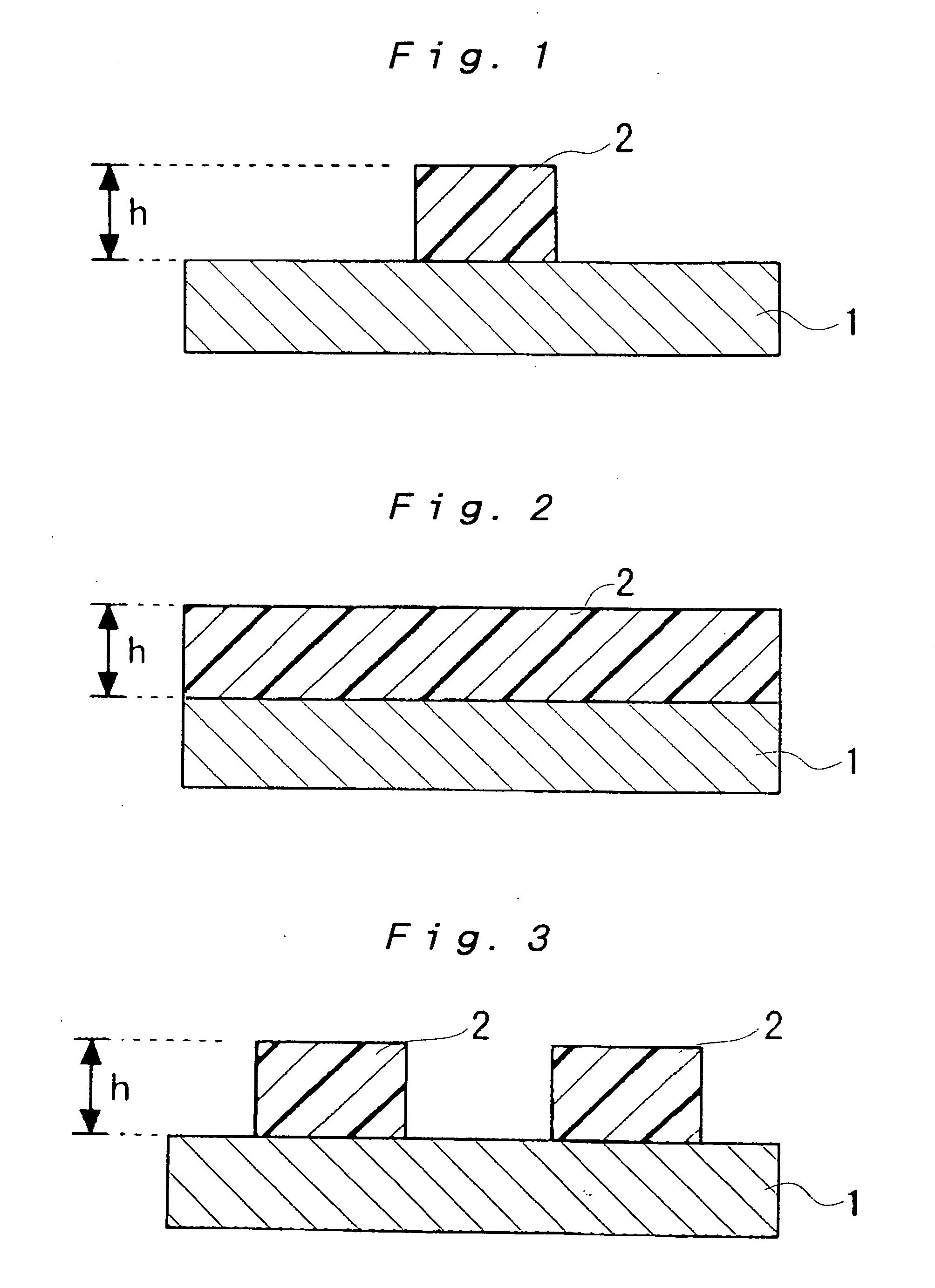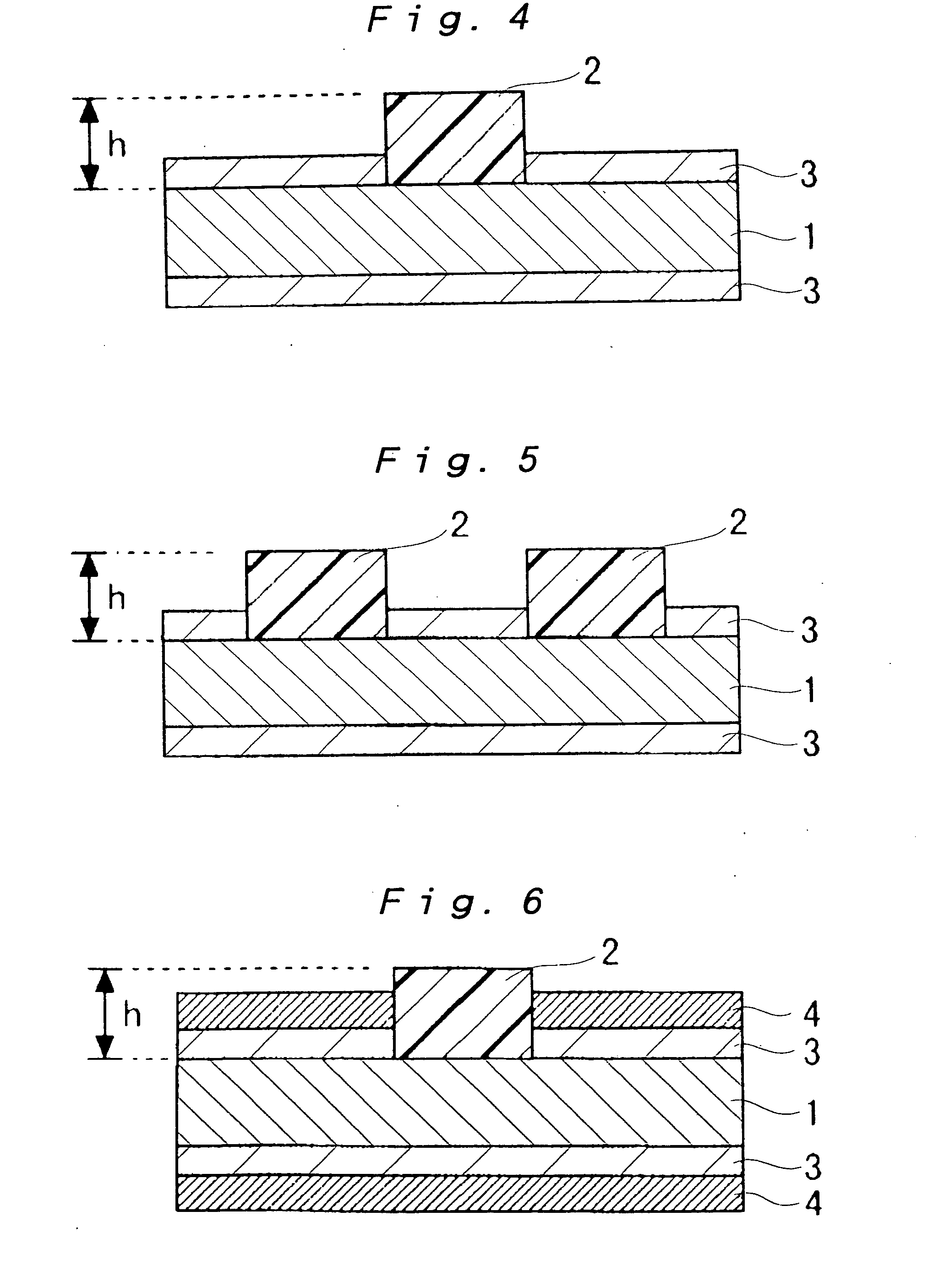Metallic material for electric or electronic parts
- Summary
- Abstract
- Description
- Claims
- Application Information
AI Technical Summary
Benefits of technology
Problems solved by technology
Method used
Image
Examples
example 1
[0078] A Cu-6% by mass Sn-0.2% by mass P alloy (phosphorus bronze, a JIS alloy number C7521 (nickel silver), and an Fe-42% by mass Ni alloy (42 alloy) were each melted and cast to prepare an ingot. The ingot was subjected to hot rolling followed by cold rolling to prepare strips having 0.1 mm thick and 20 mm wide. Each of the strips was subjected to respective steps of electrolytic degreasing, acid-washing treatment, water-washing, and drying in this order. Before the drying step, a part of the strips were dipped into a solution wherein an epoxy-series silane coupling agent was dissolved in water, thereby subjecting the strips to silane coupling treatment.
[0079] Next, a heat-resistant resin film having a thickness of 3 μm or more was formed on each of the dried strips and in a place where insulation was required by either of the following method (a) or method (b), to thereby manufacture samples Nos. 1 to 27.
[0080] (a) A varnish made of a polyimide solution or precursor solution or...
example 2
[0086] A strip material (sample No. 28) was manufactured in the same manner as the samples Nos. 8 to 20 in Example 1 except that no metallic layer was formed, and the same tests as in Example 1 were conducted. The test results and the construction of the strip material are shown in Table 1.
example 3
[0087] A strip material (sample No. 29) was manufactured in the same manner as the sample No. 1 in Example 1 except that the thickness of the heat-resistant resin film was set to 2 μm, and the same tests as in Example 1 were conducted. The test results and the construction of the strip material are shown in Table 1.
PUM
| Property | Measurement | Unit |
|---|---|---|
| Height | aaaaa | aaaaa |
| Metallic bond | aaaaa | aaaaa |
Abstract
Description
Claims
Application Information
 Login to View More
Login to View More - R&D
- Intellectual Property
- Life Sciences
- Materials
- Tech Scout
- Unparalleled Data Quality
- Higher Quality Content
- 60% Fewer Hallucinations
Browse by: Latest US Patents, China's latest patents, Technical Efficacy Thesaurus, Application Domain, Technology Topic, Popular Technical Reports.
© 2025 PatSnap. All rights reserved.Legal|Privacy policy|Modern Slavery Act Transparency Statement|Sitemap|About US| Contact US: help@patsnap.com



